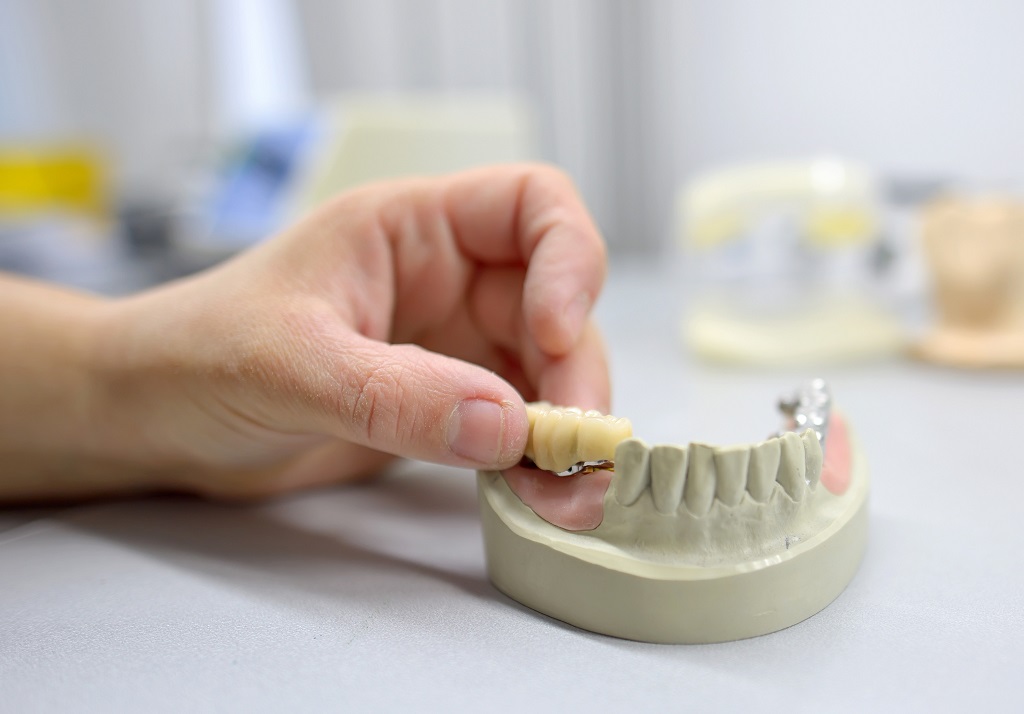Dentists recommend dental bridges in Yellowknife to replace missing teeth throughout your jaw. The right dental bridge can replace the appearance of missing teeth and restore the function you lost when you lost those teeth — the ability to smile, speak, laugh, bite and chew naturally. There are four types of dental bridges near you. Which one is right for you and your needs? Make an appointment with a dentist in Yellowknife to discuss these options to find out how to replace your missing teeth most efficiently, effectively and economically.
Traditional dental bridges
The most common type of bridge used to replace one or more missing teeth is traditional dental bridges that rely on dental crowns. A traditional bridge holds replacement teeth called pontics in place with dental crowns placed over the top of healthy teeth called abutment teeth on each side of the missing teeth. A traditional bridge is appropriate when you have healthy teeth on both sides of missing teeth, and is even strong enough for high-pressure locations near the back of your jaw. The downside of a traditional bridge, though, is that those abutment teeth need to be modified by removing enamel to make room to place the crowns. Because enamel never grows back, those abutment teeth will always need crowns to protect them.
Cantilever bridges
A cantilever bridge works just like a traditional bridge with one key exception. While a traditional bridge is held in place and supported by crowns on each side of your missing teeth, a cantilever bridge is held in place and supported by just one crown on one side of your missing tooth. A cantilever bridge can be used where there is only one abutment tooth beside a missing tooth, but will be weaker than two-crowned traditional dental bridges.
Maryland or resin-bonded bridges
A Maryland bridge is referred to as a more conservative type of dental bridge because it does not require the removal of enamel from abutment teeth to make room for dental crowns. Maryland bridges aren’t held in place by crowns. Instead, the metal or porcelain framework that holds your pontics in place is bonded with resin to the back of your natural teeth on either side of your missing teeth. A resin-bonded bridge offers the advantage of not requiring any modification to the abutment teeth, but isn’t appropriate for molars or other teeth exposed to high biting force. Maryland bridges are most commonly used in the front of your jaw.
Implant-supported bridges
An implant-supported bridge works entirely differently than any of the three options discussed above. Unlike traditional or cantilever bridges, they don’t need any other teeth to be modified by the removal of enamel. Unlike a resin-bonded bridge, they don’t rely on abutment teeth for any support. Unlike all three of those options, implant-supported bridges can replace one or more teeth in any location in your mouth. An implant-supported bridge is rooted directly into your jaw using titanium dental implants. The advantages of dental implants are that they are the strongest, stablest and most permanent solution for replacing missing teeth. The downside of implant-supported bridges is that they are the most expensive option and one that requires implant surgery.
Which of these dental bridge options is right for you depends on a lot of factors, including: your budget; the health of your remaining natural teeth; the location of your missing teeth; how many teeth you are missing; your timelines; and your general and dental health. A dentist near you will recommend the right crown to restore your missing teeth and dental function after reviewing all these factors and your personal circumstances.
